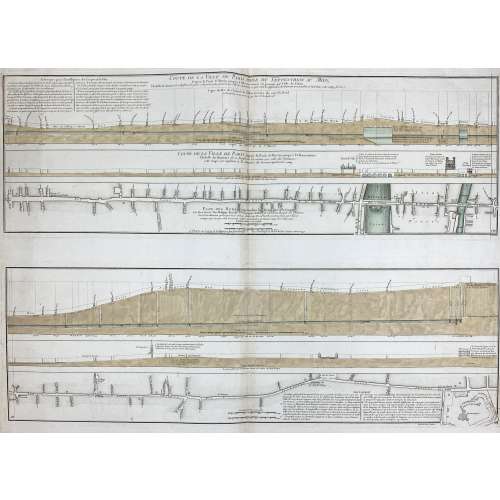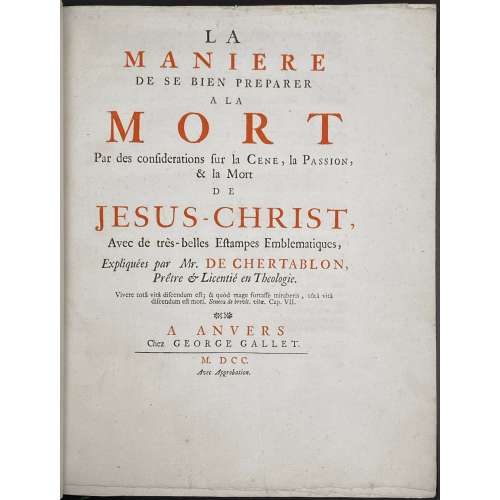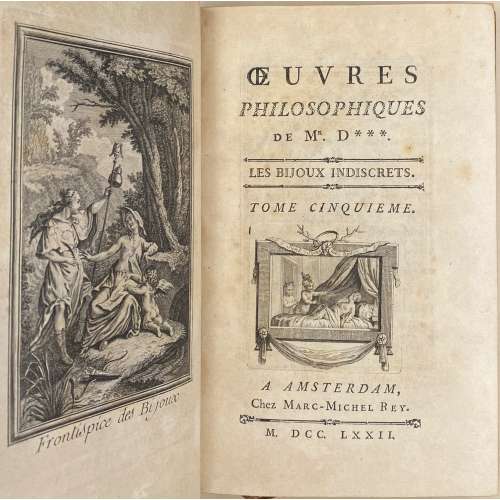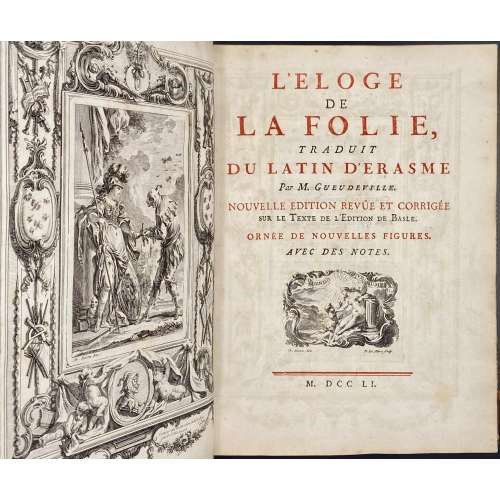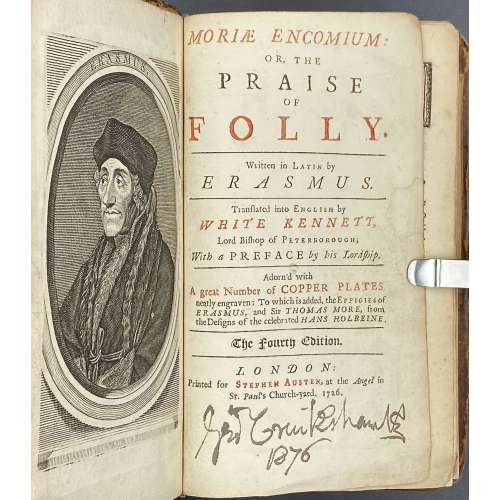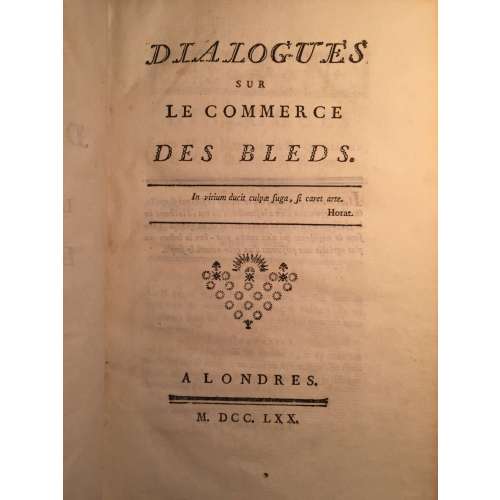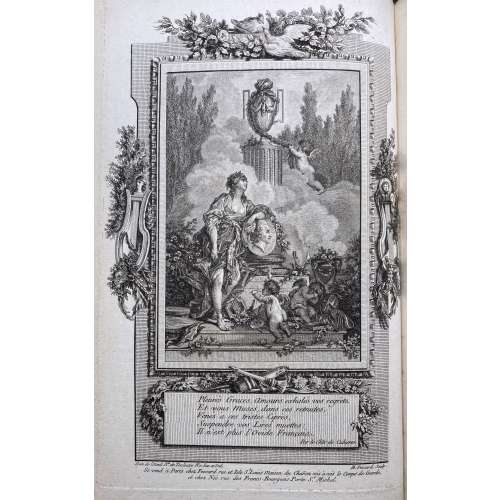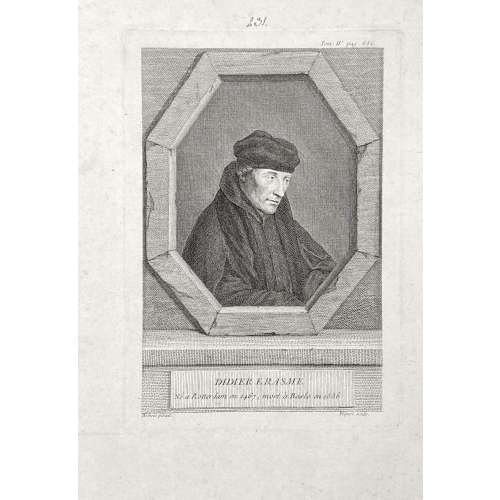Hardcover volume, 8vo, 21.5 x 14.5 cm, bound by Riviere & Son (stamped on fep verso bottom) in full brown calf, boards with triple gilt fillet border and gilt dentelle inside, spine with raised bands, gilt in compartments, black label with gilt lettering, all margins gilt, blue endpapers, bookplate of Arthur Rau pasted to front pastedown (text:
Les hommes sont méchants mais leurs livres sont bons /
Arthur Rau; signed:
E. H. New – A.D. 1922), traces of removed owner’s label to fep recto; printed on laid paper.
Title-page (engraved, in floral frame): LE TEMPLE | DE GNIDE. | Mis en Vers | Par M. Colardeau | {vignette with portrait of Pierre Corneille} | A PARIS | Chez le Jay, Libraire, Rue S
t. Jacques au dessus de | celle des Mathurins au Grand Corneille ||
Collation: 2 blanks, h.t., engraved t.p. with a portrait of Pierre Corneille, a
8, A-E
8 F
4 (52 leaves), 2 blanks, plus 7 plates by various engravers after Charles Monnet. Pagination: [i] ii-xvi, [1] 2-88 (104 pp).
Ref: MFA (Boston): accession number 37.1747
Catalogue raisonné: Lewine 114, Cohen-DeRicci 245-6.
Contributors:
Charles Monnet (French, 1732 – after 1808) – artist.
Engravers:
Jean Charles Baquoy (French, 1721 – 1777)
Nicolas Delaunay (French, 1739 – 1792)
Isidore Stanislas Helman (French, 1743 – 1806)
Louis Joseph Masquelier (French, 1741 – 1811)
François Denis Née (French, 1735 – 1818)
Nicholas Ponce (French, 1746 – 1831)
Portrait(s) designed by:
Guillaume Voiriot (French, 1713 – 1799)
Author:
Charles-Pierre Colardeau (French, 1732 – 1776)
Publisher:
Edmé-Jean Le Jay (French, 1734 – 1795)
Bookplate artist:
Edmund Hort New (British, 1871 – 1931)
Provenance:
Arthur Rau (British, 1898 – 1972); his obituary can be found in
The Book Collector 1973, vol. 22, n°1, p. 86-89. According to the genealogy service Geni, Arthur Aron Rau was born to
Jacob Aryeh Rau and
Katharina (Kaethe) Rau, and has a sister
Cecilia (Tsipporah) Rosenfelder and a brother
Frederick Solomon Rau. He went to Oxford and then joined
Maggs Brothers in their Paris establishment. "After some years there, he set up on his own, returning to England at the outbreak of the Second World War to be a schoolmaster for ten years". In 1949 he returned to Paris and retired in 1963, "and his last years he happily spent in Wensleydale...". All he published during his lifetime were two catalogues,
Livres Rares Et Anciens. Manuscrits et Autographes. — Paris: Arthur Rau, 1932-3 and
Cinquante Tres Beaux Livres Avec Un Appendice. — Paris: Arthur Rau, 1933. He also contributed to
The Book Collector.
Seller’s description: In-8° : [2]-t. gr.-xvi-88 pp. ; 7 h.-t. (qqs rouss.). - Poème d'après le roman de Montesquieu ill. de 7 eaux-fortes par Bacquoy, Delaunay, Née, etc., d'après Charles Monnet. Titre gr. orné d'un portr. de Corneille. Cohen, qui cite un ex. millésimé 1773, signale des ex. avec la date de 1772 ou sans date. - Réf. Cohen 245-246. - Conlon 72:675 (éd. à l'adresse d'Amsterdam et Paris, 1772). - Pas dans Reynaud. - Prov. Arthur Rau (1898-1972), gérant de la librairie Maggs à Paris avant d'ouvrir sa propre librairie en 1932 (ex-libris gr. par E.H. New, 1922 ; réf. BnF). - Traces d'ex-libris décollé à la garde sup.


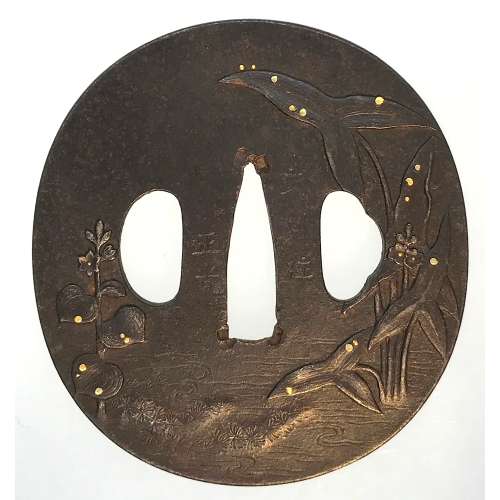

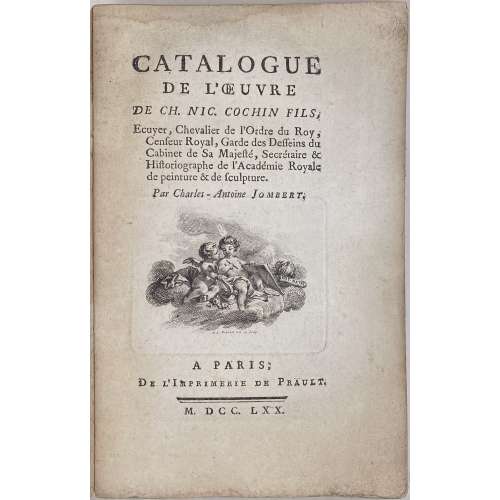
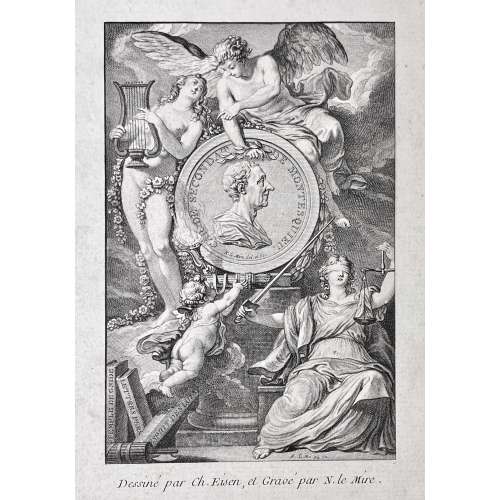
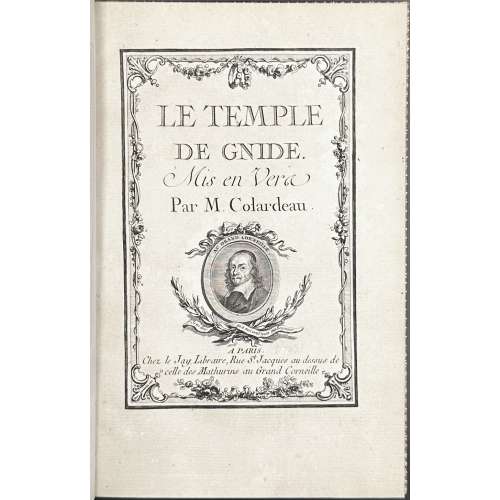
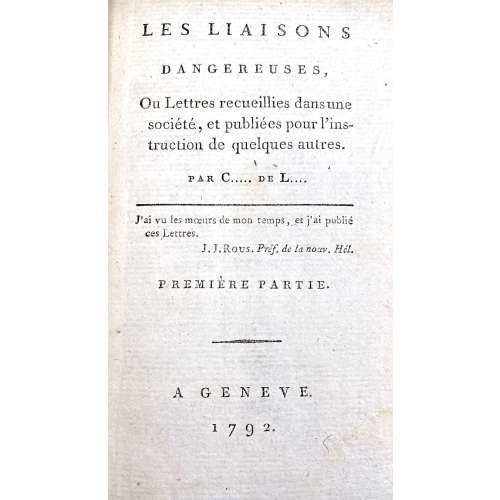
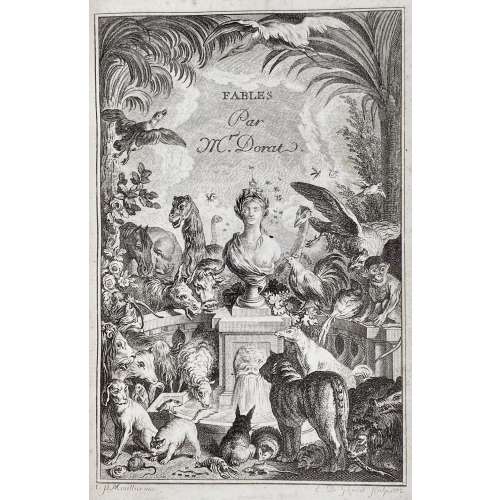
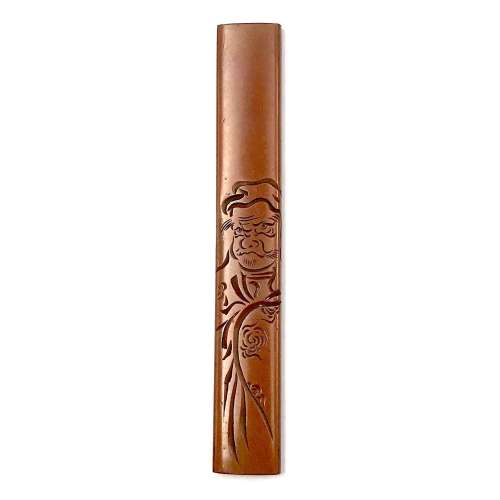

 Though we have to admit that the example from Catalog #7 by Robert E. Haynes looks much stronger.
Though we have to admit that the example from Catalog #7 by Robert E. Haynes looks much stronger.





